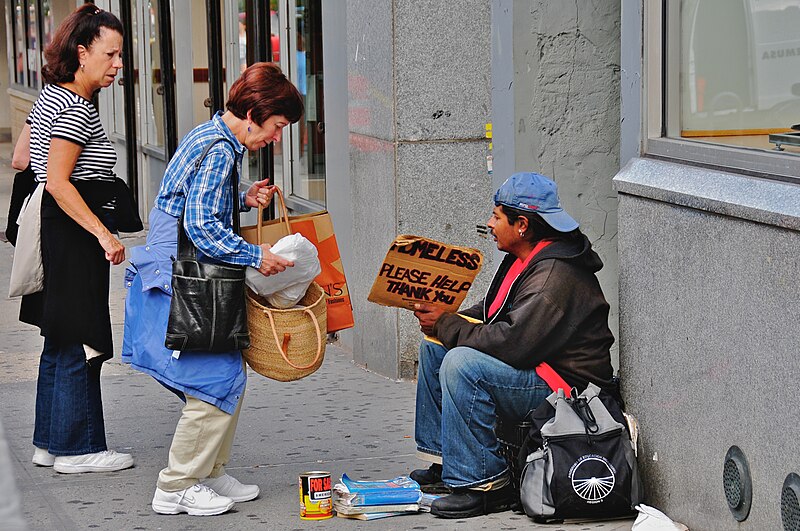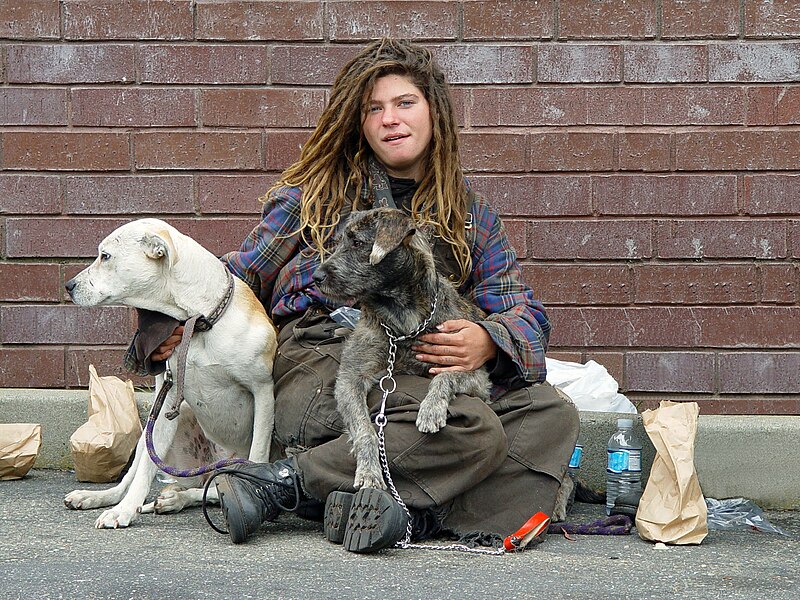Published on Tuesday, November 26, 2013 by Common Dreams
This Holiday Season, Charity No Match for Food Stamp Cuts
 (Photo: Everyday Feminism)'Tis the season to give, the saying goes.
(Photo: Everyday Feminism)'Tis the season to give, the saying goes.Yet all of the charitable food donations in the United States this year combined would not make a dent in proposed cuts to food subsidy programs that threaten at least six million people with worsened hunger.
So said researchers with the Bread for the World Institute in an interview with The Guardian published Monday.
“Virtually every church, synagogue and mosque in the country is now gathering up food and distributing, and all of that work that food banks do comes to 5% of the food that needy people get,” Bread for the World president Reverend David Beckmann told The Guardian, referencing the organization's recent report Ending Hunger in America. “95% comes from school breakfasts, lunches, food stamps and WIC, so Congress can say 'We can cut this programme 5% per cent – no big deal.' But if you cut the national nutrition programmes 5%, you cancel out everything that the charitable system is doing.”
The comments come as further slashes to the Supplemental Nutrition Assistance Program are considered in the House, where $39 billion in cuts over the next ten years is up for debate, and the Senate, where a $4 billion slash could be approved. This is in addition to cuts that took effect on November 1 and will amount to $5 billion by the end of the year and $11 billion by 2016. Critics charge that these slashes, which constitute a fraction of the federal budget, will make little difference to tax payers yet devastate the millions who depend on food aid for survival.
Almost half of all people who receive food stamps are children, Forbes reports.
The cuts are under consideration despite 2012 census data, analyzed by the Department of Agriculture, that shows hunger in the United States is stuck at high levels for the fifth year in a row, with 14.5 percent of all U.S. households facing food insecurity in 2012. Poor households, "households with children headed by single women or single men," and African American and Hispanic households hardest hit, according to the USDA.
_____________________
This work is licensed under a Creative Commons Attribution-Share Alike 3.0 License.
..........

..........
Barbie
Izquierdo, a low-income mother of two small children, is a member of
Witnesses to Hunger, a Philadelphia group of moms dedicated to ending
hunger and poverty for their children and for families nationwide. About
a month ago while she was waiting in line at a supermarket, she
overheard two families trying to make purchases with their food stamps
debit card. A computer glitch had temporarily shut down the system;
these families and their children of all ages had to leave the store
empty-handed. Barbie had to be a witness again. This problem was fixed
in a day, but empty refrigerators when inadequate food stamps run out is
a monthly fact of life for millions of poor families. Barbie has been
there herself, and she knows it got worse starting November 1, during
this month of Thanksgiving, when food stamp cuts of $36 a month for a family of four took effect.
Barbie described this experience during a forum held by Bread for the World this week to release a new report, Ending Hunger in America. The report illuminates that too many people in this country cannot get enough work, and when they do work their pay is too low. The vast majority of people receiving food stamps are children, elderly or the disabled. Two-thirds of the working-aged, non-disabled parents worked while receiving SNAP, and almost ninety percent worked in the year before or after using this aid. But they don't earn enough to be able to afford food.
If people cannot get proper nutrition, their health is compromised. For children, inadequate food can mean developmental delays and falling behind at school. For children and adults, it can mean obesity and diabetes, as families cope with hunger by eating filling foods with empty calories. For seniors, inability to afford healthy foods can make illnesses worse.
Many of us are stocking up on the fixings for a wonderful Thanksgiving. The average cost to serve ten people is just under $50 this year, according to the American Farm Bureau Federation. After the recent cut, people receiving food stamps (now called SNAP, the Supplemental Nutrition Assistance Program) get an average of less than $1.40 per meal. That certainly doesn't buy a Thanksgiving dinner, but it also doesn't provide enough to put food on the table all month long.
Read More Here
Barbie described this experience during a forum held by Bread for the World this week to release a new report, Ending Hunger in America. The report illuminates that too many people in this country cannot get enough work, and when they do work their pay is too low. The vast majority of people receiving food stamps are children, elderly or the disabled. Two-thirds of the working-aged, non-disabled parents worked while receiving SNAP, and almost ninety percent worked in the year before or after using this aid. But they don't earn enough to be able to afford food.
If people cannot get proper nutrition, their health is compromised. For children, inadequate food can mean developmental delays and falling behind at school. For children and adults, it can mean obesity and diabetes, as families cope with hunger by eating filling foods with empty calories. For seniors, inability to afford healthy foods can make illnesses worse.
Many of us are stocking up on the fixings for a wonderful Thanksgiving. The average cost to serve ten people is just under $50 this year, according to the American Farm Bureau Federation. After the recent cut, people receiving food stamps (now called SNAP, the Supplemental Nutrition Assistance Program) get an average of less than $1.40 per meal. That certainly doesn't buy a Thanksgiving dinner, but it also doesn't provide enough to put food on the table all month long.
Read More Here

Helping The Homeless Wikimedia . Org
Author Ed Yourdon from New York City, USA
Homeless woman with dogs ,Haight Street, San Francisco, CA Wikimedia . Org
..........
Food Stamps Too Skimpy to Improve Food Security or Diet, Study Finds
by Nov 25th 2013 2:37PM

NEW YORK -- A program that provides food and nutrition assistance to millions of low-income Americans may not be effective at current funding levels, suggests a new study.
Researchers found people who received assistance through the Supplemental Nutrition Assistance Program (SNAP) fared no better than people in similar conditions who were not eligible or didn't enroll in the program.
"Our insights were maybe not surprising, but it's the first time something like this has been documented," Eric Rimm told Reuters Health.
Rimm is the study's senior author and an associate professor of epidemiology and nutrition at the Harvard School of Public Health in Boston.
SNAP -- formerly known as food stamps -- is the largest U.S. food assistance program and reached approximately 45 million people in 2011, Rimm and his colleagues write in the Journal of Nutrition Education and Behavior. The program is run by the U.S. Department of Agriculture (USDA).
People on SNAP can use benefits to buy most food, but not alcohol, supplements or prepared meals.
Previous studies looking into whether SNAP improves people's access to food and diet quality have produced mixed results.
For their study, the researchers recruited 107 adults who called a hunger helpline in Massachusetts and applied for SNAP.
They then compared food access and diet quality among the 64 people who were able to enroll in the program and the 43 people who did not enroll.
They collected questionnaires from those people over three months in 2011.
The researchers found people's access to food -- or "food security" -- improved a bit among both groups. But neither group did particularly better than the other.
..........















No comments:
Post a Comment
Hello and thank you for visiting my blog. Please share your thoughts and leave a comment :)